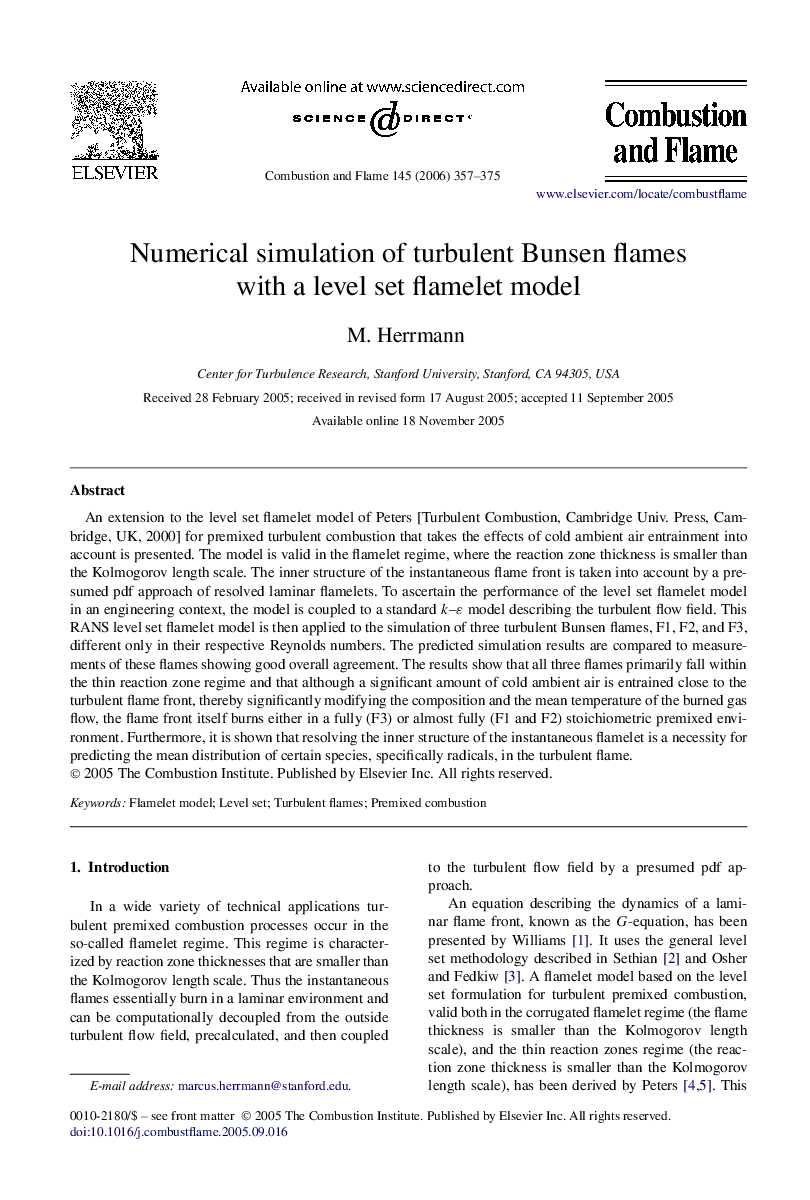| Article ID | Journal | Published Year | Pages | File Type |
|---|---|---|---|---|
| 170193 | Combustion and Flame | 2006 | 19 Pages |
An extension to the level set flamelet model of Peters [Turbulent Combustion, Cambridge Univ. Press, Cambridge, UK, 2000] for premixed turbulent combustion that takes the effects of cold ambient air entrainment into account is presented. The model is valid in the flamelet regime, where the reaction zone thickness is smaller than the Kolmogorov length scale. The inner structure of the instantaneous flame front is taken into account by a presumed pdf approach of resolved laminar flamelets. To ascertain the performance of the level set flamelet model in an engineering context, the model is coupled to a standard k–ε model describing the turbulent flow field. This RANS level set flamelet model is then applied to the simulation of three turbulent Bunsen flames, F1, F2, and F3, different only in their respective Reynolds numbers. The predicted simulation results are compared to measurements of these flames showing good overall agreement. The results show that all three flames primarily fall within the thin reaction zone regime and that although a significant amount of cold ambient air is entrained close to the turbulent flame front, thereby significantly modifying the composition and the mean temperature of the burned gas flow, the flame front itself burns either in a fully (F3) or almost fully (F1 and F2) stoichiometric premixed environment. Furthermore, it is shown that resolving the inner structure of the instantaneous flamelet is a necessity for predicting the mean distribution of certain species, specifically radicals, in the turbulent flame.
